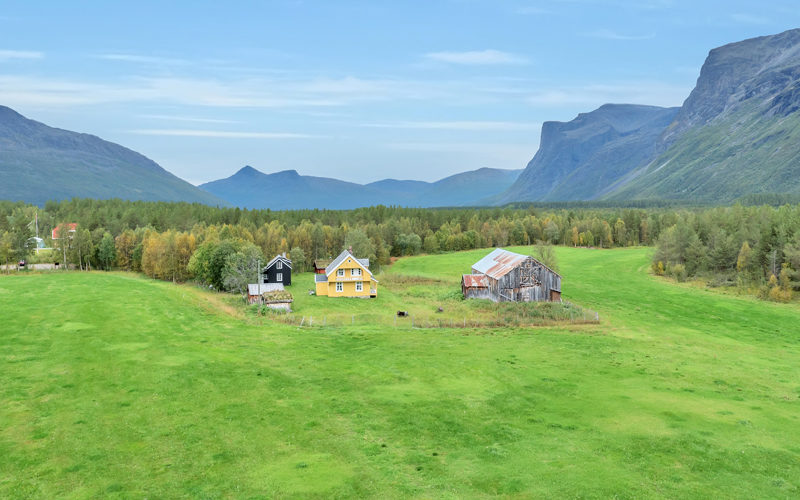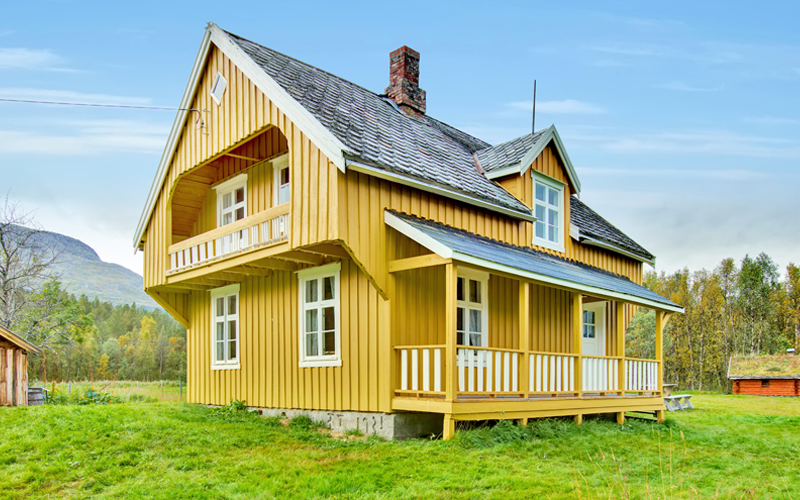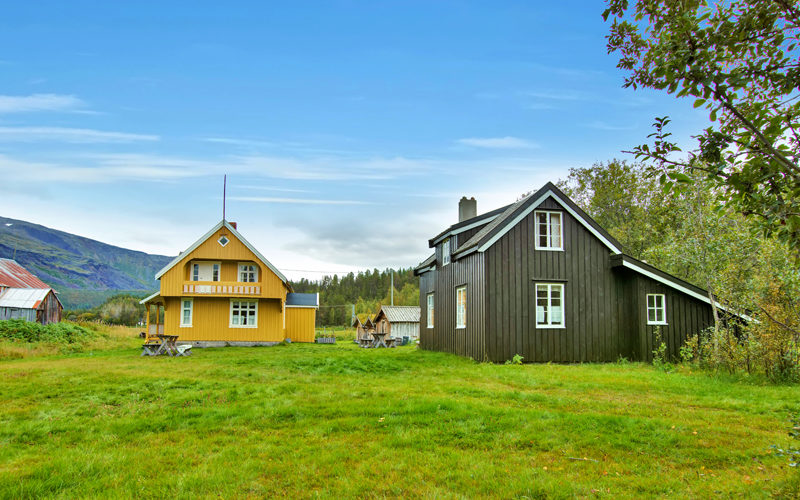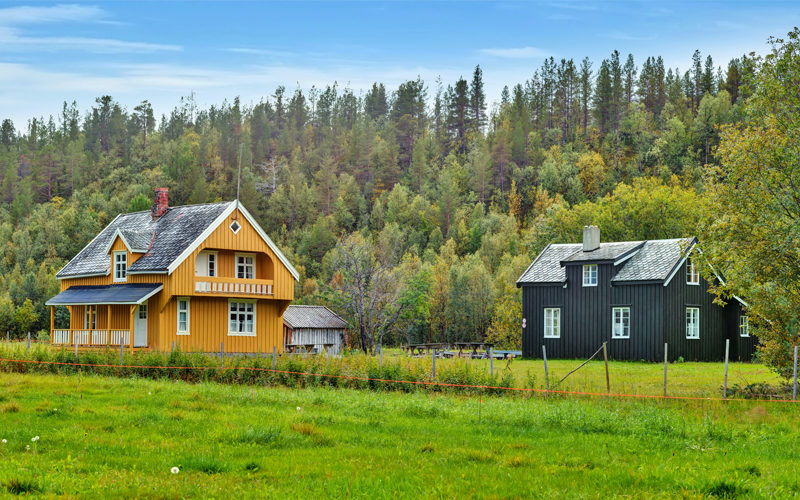Tørfoss kvengård

Tørfoss Kven farm is our historical site in Nordreisa. The farm is situated in Reisa valley.
About Tørfoss kvenfarm-Kuivakoski
Tørfoss farm was cleared in the 1750s. The farm consists of a main house, a cottage used by the hired help,a bread oven, a sauna, a barn and three storage sheds, the sheds were for storage of meat, cheese and clothes and tools. The sauna is traditionally built as a joined log building and is placed far from the house due to the fire hazard. The main house is built in 1931. The oldest building is the middle shed, and dates to the clearing of the farm in the mid 18th century.
The house is decorated as it would have been when new, while the sauna and sheds show us how the farm could have looked like in the 18th century. There are several typical Kveni architectural details on Tørfoss. For instance all the window sills in the house are slightly curved with slim vessels underneath, so that water formed from condensation in winter could be led away from the windows.
At Tørfoss you will be given a small glimpse of how a Kven family made a living. In the cottage you find the bread oven made from local stone and clay. It fits 20 bread at a time and was used by both the farms inhabitants and their neighbours. It is still in regular use by the museum for special events.
Tørfoss Kvenfarm was in 2019 given protected status by the Directorate for Cultural Heritage in 2019 as an important Kveni cultural heritage site. It was one of the first in Troms of its kind to gain this status.
How to get there
To get there turn off E6 in Storslett on RV 865 towards Bilto. Follow the road ca. 18 kilometres. The turn-off to Tørfoss will be on your left hand side, indicated by roadsigns.

About Kveni in North Troms
The farm is an example from the Kven settler history in Northern Norway in the 18th and 19th century. Typical of the Kven settling pattern was that they settled in the on fjord coast and the connecting valleys. This was the case in Kvænangen, Nordreisa and in Skibotn. These areas are all populated by pine woods, an important natural resource for the Kveni. The forest provided both lumber and pine tar.
The Kveni were originally a Finnish people who came from the Northern coastal areas around the Gulf of Bothnia. From the mid-18th century migration from here to areas in Norway, like Nordreisa occurred regularly. This migration was due to both the Finnish colonialization of the traditional Sami areas and population growth in combination with a lack of land.
Around 1830s there was a growth in the Kveni migration. While they earlier had preferred to settle close to the fjords and valleys with their resource rich forests, they now also moved to the coasts. Work in fishing, cities and mines were now important.
Like the Sami population, the Kveni too suffered under governmental pressure to become Norwegian and stop practising their culture and language. Due to this the Kveni language is threatened and many have little knowledge about their Kven heritage.
At Tørfoss you can learn about how a Kven family lived and how the Kven culture differed from the Norwegian and Sami.





